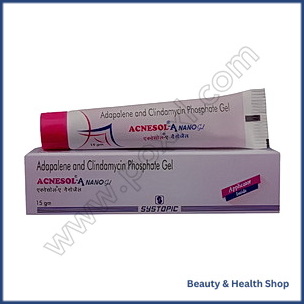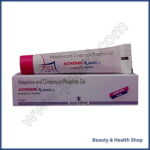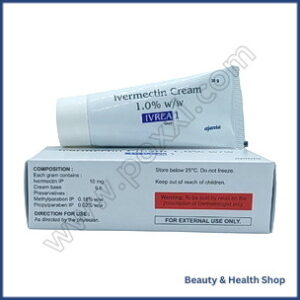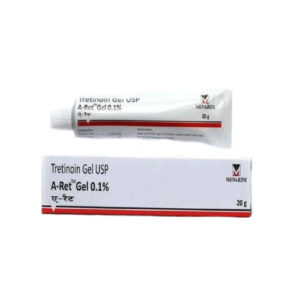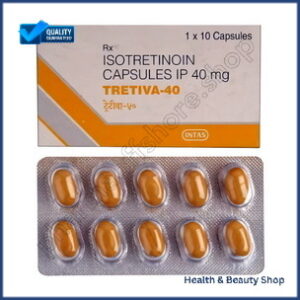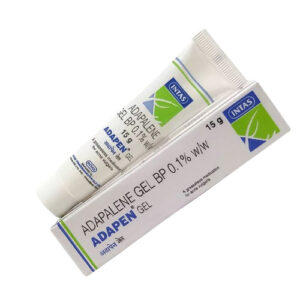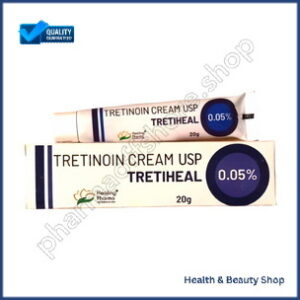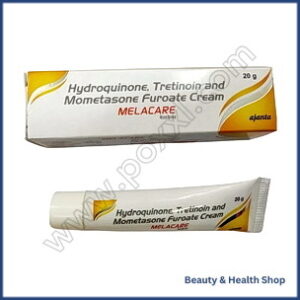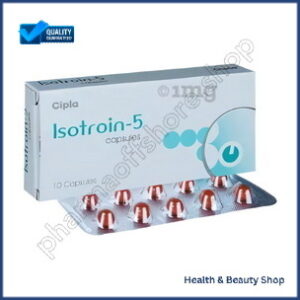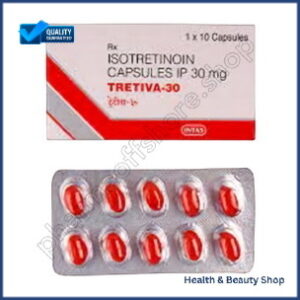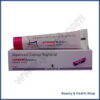If you’re seeking an effective solution for acne, Acnesol A Nano Gel 15 gm with Adapalene and Clindamycin could be the answer you’ve been looking for. This topical medication offers a dual-action approach to combatting acne by addressing inflammation and bacterial growth. By incorporating this gel into your skincare routine, you may find relief from breakouts and improved skin appearance. But what sets this product apart from other acne treatments? Stay tuned to discover the unique benefits and considerations associated with using Acnesol A Nano Gel 15 gm.
Why is this medication prescribed?
Acnesol A Nano Gel is prescribed by healthcare providers to treat acne by reducing inflammation and controlling excessive oil production in the skin. Acne, a common skin condition, occurs when hair follicles become clogged with oil and dead skin cells.
This gel contains two active ingredients, Adapalene and Clindamycin, which work together to combat acne in different ways. Adapalene helps to unclog pores and reduce inflammation, while Clindamycin inhibits the growth of acne-causing bacteria on the skin.
How should this medicine be used?
To use this medicine effectively, follow the instructions provided by your healthcare provider or pharmacist.
Before applying Acnesol A Nano Gel, make sure your face is clean and dry. Take a pea-sized amount of the gel and gently massage it onto the affected areas in a thin layer. Avoid getting the gel in your eyes, mouth, or nose. Wash your hands thoroughly after applying the gel.
It’s usually recommended to use Acnesol A Nano Gel once daily in the evening, or as directed by your healthcare provider. Don’t apply this gel to sunburned, broken, or irritated skin. It may take several weeks to see an improvement in your condition, so be patient and continue using the gel as prescribed.
If you experience severe irritation, redness, or peeling of the skin, contact your healthcare provider. Store the gel at room temperature and keep it out of reach of children.
Other uses for this medicine
For additional purposes, this medicine may also be utilized as prescribed by your healthcare provider. Acnesol A Nano Gel, containing Adapalene and Clindamycin, is primarily used to treat acne. However, beyond acne treatment, healthcare providers may recommend this gel for other skin conditions, such as mild to moderate cases of folliculitis, a skin condition characterized by inflamed hair follicles. Additionally, it may be prescribed for individuals with certain types of dermatitis, like perioral dermatitis, which causes redness and bumps around the mouth.
In some cases, healthcare providers might suggest Acnesol A Nano Gel for managing pityrosporum folliculitis, a type of fungal acne that appears as small, itchy bumps. This gel’s combination of Adapalene and Clindamycin can help combat the underlying causes of these skin conditions, making it a versatile treatment option under professional guidance. Always consult your healthcare provider before using this gel for conditions other than acne to confirm its suitability and effectiveness for your specific skin concerns.
What special precautions should I follow?
Before applying Acnesol A Nano Gel, it’s important to check for any existing skin conditions or allergies you may have. Consult with a healthcare professional if you have sensitive skin or are currently using other acne treatments.
Remember to perform a patch test before full application to confirm compatibility with your skin.
Check Existing Skin Conditions
Prior to using Acnesol A Nano Gel, it’s essential to assess your current skin conditions to determine any special precautions necessary. Here are some vital steps to follow:
-
Consult a dermatologist: Seek professional advice to identify any pre-existing skin conditions.
-
Test on a small area: Before full application, do a patch test to check for allergic reactions.
-
Avoid sun exposure: Some skin conditions may react adversely to sunlight, so use sunscreen.
-
Moisturize if needed: If your skin tends to dry out easily, consider using a moisturizer in conjunction with the gel.
What special dietary instructions should I follow?
To optimize the effectiveness of Acnesol A Nano Gel, consider incorporating a balanced diet rich in fruits and vegetables while limiting processed foods. Eating a variety of colorful fruits and vegetables can provide essential vitamins and antioxidants that support overall skin health. Vitamin A, found in foods like carrots and sweet potatoes, can promote skin cell turnover, while vitamin C in citrus fruits helps in collagen production for skin strength. Additionally, foods high in omega-3 fatty acids, such as salmon and walnuts, can help reduce inflammation and support skin hydration.
It’s also crucial to stay hydrated by drinking an adequate amount of water daily. Water helps flush out toxins from the body, keeping the skin clear and hydrated. Limiting sugary drinks and excessive caffeine intake can also benefit skin health by reducing the risk of inflammation and breakouts.
What should I do if I forget a dose?
If you forget a dose of Acnesol A Nano Gel, take it as soon as you remember, but don’t double up on doses to make up for the missed one. It’s important to maintain a consistent application schedule to guarantee the effectiveness of the medication. Missing a dose occasionally may not have a notable impact on the treatment, but try to adhere to the prescribed routine as closely as possible.
To help remember your doses, you may consider setting an alarm or incorporating the application into your daily skincare routine. If you frequently forget doses, it might be helpful to talk to your healthcare provider about strategies to improve adherence or alternative treatment options.
Consistency is key in the treatment of acne with Acnesol A Nano Gel. If you have any concerns about missed doses or need further guidance, don’t hesitate to consult your healthcare provider for advice tailored to your specific situation.
What side effects can this medication cause?
Acnesol A Nano Gel may cause some side effects that can be persistent or worsen over time. Certain side effects can be significant, so it’s important to be aware of them.
If you notice any symptoms that concern you, contacting your doctor promptly is recommended.
Persistent or Worsening Side Effects
Experiencing persistent or worsening side effects from Acnesol A Nano Gel can indicate the necessity for immediate medical attention. Here are some side effects that may occur:
- Skin redness or irritation.
- Dryness or peeling of the skin.
- Burning or stinging sensation.
- Itching or rash development.
If you notice any of these side effects intensifying or lingering, it’s vital to consult your healthcare provider promptly. These symptoms could be indicative of a more severe reaction or sensitivity to the medication. It’s essential to address any persistent or worsening side effects to ensure proper management and timely intervention for your well-being.
Some side effects can be serious. If you experience any of the following symptoms, call your doctor immediately:
In case you encounter any of the subsequent symptoms, it’s imperative to promptly contact your physician:
-
Severe skin irritation, including redness, burning, or itching.
-
Swelling of the face, lips, or throat, which can indicate an allergic reaction.
-
Intense stomach pain, diarrhea, or bloody stools, signaling a possible gastrointestinal issue.
-
Vision changes, such as blurriness or difficulty seeing, which could be a rare but serious side effect.
What should I know about the storage and disposal of this medication?
Proper storage and disposal of this medication are essential for maintaining its effectiveness and ensuring safety. Store Acnesol A Nano Gel at room temperature away from moisture and heat. Keep it out of reach of children and pets to prevent accidental ingestion. Avoid freezing the gel. Make sure to tightly close the container after each use to prevent contamination and evaporation of the product.
When it comes to disposal, don’t flush Acnesol A Nano Gel down the toilet or pour it into a drain unless instructed to do so. Properly discard this medication according to local guidelines or through a drug take-back program. If no take-back program is available, mix the gel with an undesirable substance such as dirt or used coffee grounds in a sealed plastic bag before throwing it in the trash. This helps prevent accidental ingestion by animals or children and protects the environment. If you have any questions about storage or disposal, consult your pharmacist or healthcare provider for guidance.
In case of an emergency/overdose
During an emergency or in the event of an overdose of Acnesol A Nano Gel, immediate action is essential for ensuring safety and seeking appropriate medical assistance. If you or someone else accidentally ingests the gel or applies too much to the skin, take prompt action.
In case of ingestion, contact a poison control center or go to the nearest emergency room immediately. When an overdose occurs through excessive skin application, wash the affected area thoroughly with water and discontinue use. It’s important to avoid further application until consulting a healthcare professional. Symptoms of an overdose may include severe skin irritation, redness, or swelling.
Be prepared to provide information about the product ingested or applied, the amount used, and the time of exposure to assist medical personnel in providing appropriate treatment. Remember, swift action can help mitigate potential risks and ensure proper care during emergencies involving Acnesol A Nano Gel.
What other information should I know?
To enhance your understanding of Acnesol A Nano Gel, it’s essential to be aware of specific precautions and potential side effects associated with its use. Before applying the gel, thoroughly cleanse the affected area with a mild cleanser and water, ensuring it’s completely dry before application. Avoid using Acnesol A Nano Gel on broken or irritated skin to prevent further irritation. It’s recommended to apply a thin layer of the gel to the affected skin once daily, preferably in the evening, unless directed otherwise by your healthcare provider. Remember to wash your hands after applying the gel to prevent accidental contact with sensitive areas like the eyes, mouth, or mucous membranes.
Some common side effects of Acnesol A Nano Gel may include dryness, redness, peeling, stinging, or burning sensations at the application site. These effects are usually mild and may improve as your skin adjusts to the medication. However, if you experience severe irritation, swelling, or signs of an allergic reaction such as rash, itching, or difficulty breathing, seek medical attention promptly. It’s important to use Acnesol A Nano Gel as directed by your healthcare provider to achieve the best results and minimize the risk of adverse effects.
Brand names
When considering brand names for the Acnesol A Nano Gel, evaluating their availability in your region can help guide your selection. Here is a table showcasing some common brand names of similar products for your reference:
| Brand Name | Active Ingredients | Manufacturer |
|---|---|---|
| Differin Gel | Adapalene 0.1% | Galderma |
| Clindac A Gel | Clindamycin 1% | Galderma |
| Epiduo Gel | Adapalene 0.1%/Benzoyl Peroxide 2.5% | Galderma |
| Acnecinamide Gel | Niacinamide 4%/Clindamycin 1% | Ethicare Remedies |
These are just a few of the brand names available in the market. It’s important to consult with your healthcare provider or pharmacist to determine the best option for your specific needs. Each brand may have slight variations in formulation and concentrations, so understanding these differences is vital for effective acne treatment. Make an informed decision based on the guidance provided by your healthcare professional.
Purchase Options Available
Consider exploring various avenues for acquiring the Acnesol A Nano Gel to guarantee you find the most suitable purchase option for your needs. You can start by visiting local pharmacies or drugstores to see if they stock this product. Some pharmacies may require a prescription, so it’s advisable to check beforehand. Additionally, many online retailers offer the Acnesol A Nano Gel for purchase. Make sure that you’re buying from a reputable website to avoid counterfeit products.
Another option is to consult a dermatologist who can provide guidance on where to purchase the Acnesol A Nano Gel. They may have recommendations for trusted sources or may even sell the product themselves. It’s important to compare prices from different sellers to make sure you’re getting the best deal. Keep an eye out for discounts or promotions that could help you save money on your purchase. By exploring these various avenues, you can make an informed decision on where to buy the Acnesol A Nano Gel.
To summarise
After exploring various avenues for acquiring the Acnesol A Nano Gel, it’s important to summarize the key points to make an informed purchase decision.
Acnesol A Nano Gel is a combination product containing Adapalene (0.1%) and Clindamycin (1%), which are effective in treating acne. Adapalene works by unclogging pores and reducing inflammation, while Clindamycin fights acne-causing bacteria.
It’s essential to follow the prescribed usage instructions to achieve the best results. When considering purchasing Acnesol A Nano Gel, it’s vital to consult a healthcare professional to determine if it’s suitable for your skin type and condition.
Additionally, be aware of any potential side effects such as dryness, redness, or peeling, and discontinue use if any adverse reactions occur. Acnesol A Nano Gel may take some time to show visible improvements, so patience is key.


